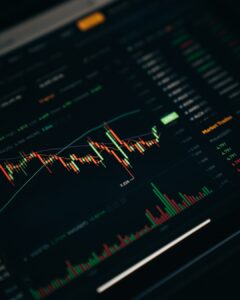Maximizing Your Profit with Stop Loss Orders in Forex
The forex market is known for its volatility and fast-paced nature, making it both exciting and risky for traders. As a forex trader, it is essential to have a well-planned risk management strategy to protect your capital and maximize your profits. One of the most effective tools in achieving this is the use of stop loss orders.
What is a Stop Loss Order?
A stop loss order is a risk management tool used by traders to limit their potential losses in a trade. It is an order placed with your broker to automatically close a position when the price reaches a specific level. By setting a stop loss order, you are essentially defining the maximum amount you are willing to lose on a trade.
How Does a Stop Loss Order Work?
Let’s say you are trading the EUR/USD currency pair, and you enter a long position at 1.1000. You have analyzed the market and determined that if the price drops below 1.0950, it would invalidate your trading thesis. To protect yourself from further losses, you can set a stop loss order at 1.0950.
If the price reaches 1.0950 or below, your broker will automatically execute a market order to close your position, limiting your loss to 50 pips. This allows you to exit the trade before the losses become significant, protecting your capital.
The Benefits of Using Stop Loss Orders
1. Risk Management: The primary benefit of using stop loss orders is effective risk management. By defining your maximum loss upfront, you can limit the potential damage to your trading account. This is crucial in the unpredictable forex market, where prices can quickly turn against you.
2. Emotion Control: Trading can evoke strong emotions, such as fear and greed, which can lead to impulsive decision-making. By using stop loss orders, you remove the need to make subjective judgments in the heat of the moment. This helps you maintain discipline and stick to your trading plan.
3. Time Efficiency: Setting stop loss orders allows you to automate your trading process. Once you have determined your entry and exit levels, you can place your orders and let the market take its course. This frees up your time and reduces the need for constant monitoring of the market.
4. Peace of Mind: Knowing that your downside risk is limited can give you peace of mind as a trader. It allows you to focus on other aspects of your trading strategy and not constantly worry about potential losses.
Tips for Maximizing Your Profit with Stop Loss Orders
1. Set Realistic Stop Loss Levels: It is important to set stop loss levels that are realistic and based on sound analysis. Avoid setting them too tight, as it increases the likelihood of premature stop-outs. On the other hand, setting them too wide may expose your account to more significant losses.
2. Adjust Stop Loss Levels as the Trade Progresses: As the market moves in your favor, it is advisable to adjust your stop loss levels to lock in profits and reduce risk. This technique, known as trailing stop loss, allows you to ride the trend and capture larger gains while still protecting your capital.
3. Avoid Moving Stop Loss Orders in the Wrong Direction: One common mistake made by traders is moving their stop loss orders further away from the entry point when the trade goes against them. This is often driven by the fear of being stopped out before the trade turns profitable. However, doing so exposes your account to larger losses and goes against the purpose of risk management.
4. Regularly Review and Adjust Stop Loss Levels: The forex market is dynamic, and conditions can change quickly. It is important to regularly review your stop loss levels and adjust them based on market conditions, news events, and other relevant factors. This ensures that your risk management strategy remains effective and up to date.
In conclusion, stop loss orders are an essential tool for maximizing your profit and protecting your capital in the forex market. By setting realistic levels, regularly reviewing and adjusting them, and employing sound risk management principles, you can enhance your trading performance and achieve long-term success. Remember, trading is a journey, and risk management should always be at the forefront of your strategy.





